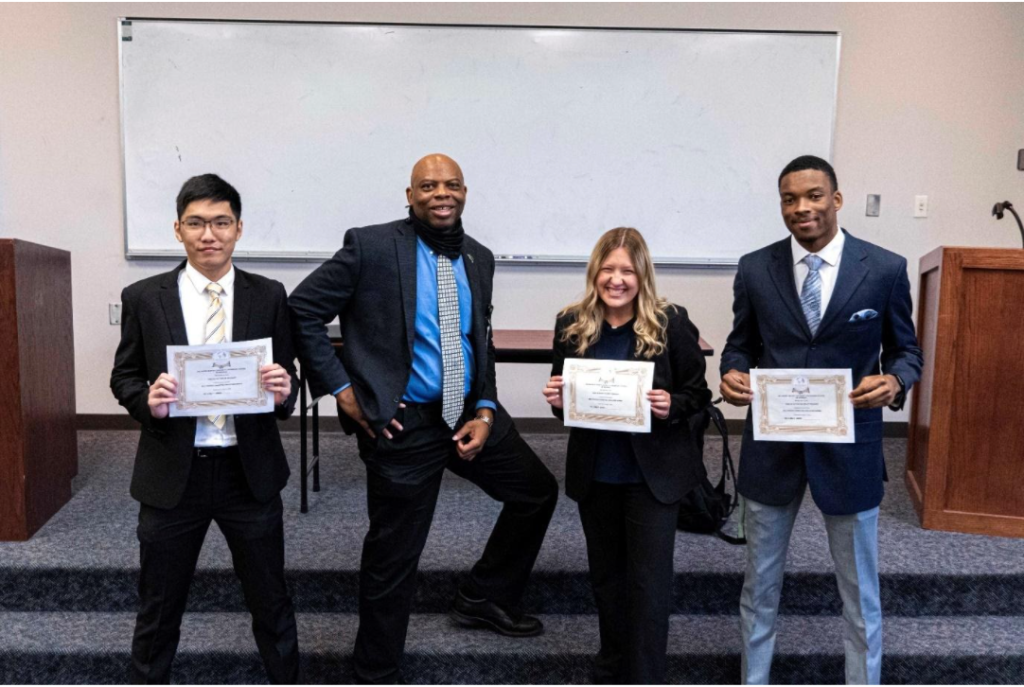Dr. Green’s Approach to Coaching Students Toward Employability
Sometimes traditional, long-tenured professors can get stuck in a rut, teaching students skills that are no longer needed or are relevant to conditions in the current fast-changing marketplace. Dr. Daryl D. Green provides his students with relevant, contemporary, career-ready skills that address the future of their work, as they prepare to begin their careers. Business simulations, based on real-time, current examples, provide students the skill-building that is important to their preparation. Dr. Green’s research on how to increase GEN Z learning outcomes serves as a basis for how he relates to his students as he imparts practical applications in the classroom. See research on this topic: https://merj.scholasticahq.com/article/22007-the-coronavirus-effect-how-to-engage-generation-z-for-greater-student-outcomes.
In order to better understand the ins and outs of business strategy, students in Dr. Green’s strategy class participated in a business highly regarded simulation project, the Capsim Capstone. Thirty-six students were divided into six teams, which competed against each other over a nine-week period. The rigorous simulation process included weekly briefings, submission of detailed operational reports, and formal presentations. Team Digby was declared the winner of the competition. Congratulations to team members Sayvon Milton, Brittni Proffitt, Noah Higgins, Matthew Neel, Andreja Peciuraite, and Justin Koone.

Dr. Green, the management professor who taught the class, explains, “Our teams performed well in the business simulation projects in which they participated. In the new learning paradigm of faculty instruction, I see my role as academic coach or facilitator. In my business school, we require our students to take this simulation seriously. Congratulations to Team Digby! They set a great example of what hard work can do.”
Team Digby performed in the simulation at an historical level. It finished in the 99th scoring percentile. We are extremely proud of the result produced by the winners. The scores achieved by the team compared most favorably with similar teams from other schools who have competed in the same simulations. Some of these schools include Brigham Young University, California State University, Florida State University, and the University of Waterloo. You can view the winning team’s presentation at https://youtu.be/A3pX_aNq2L8.
Capsim Capstone® is a complex business simulation project designed to provide students with real-world applications of business strategy. The simulation teaches marketing, strategizing, business finance and accounting, cross-functional alignment, competitive analysis, teamwork, and the selection of tactics and strategies, all of which are necessary to build a successful, focused organization. For more information, please contact Dr. Daryl Green at drdarylgreen@gmail.com.
ABOUT DR. D. GREEN
Dr. Daryl D. Green is a business strategist, awarding speaker, and noted author. He is the Vice President of Marketing at AGSM Consulting LLC where he provides strategic planning, marketing, and product development to emerging and existing businesses. He provides consulting, guidance, and management training for today’s small businesses. He is a business professor operating a small business in Oklahoma. He has assisted over 100 organizations across the globe with marketing and management problems. If you would like more information about this article or business assistance, please contact Dr. Green at drdarylgreen@gmail.com or visit http://www.drdarylgreen.com.















